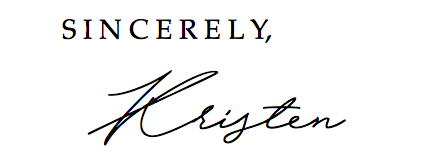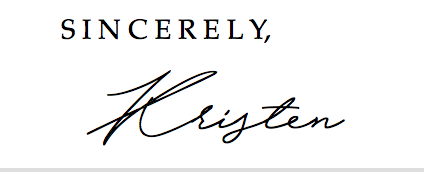Finishing & Sealing the Countertops
Apologies in advance for the lack of photos – I wasn’t about to bring my camera in the dust storm that was created in our kitchen during this process – Also, our sealer was extremely time sensitive and I didn’t have a moment to grab photos during that process.

First a little tease… This is finally the step where you see your fresh concrete counters!
Oh, and you’ll need more of that coffee!
Refer to your concrete manufacture’s instructions for the best curing conditions and curing time. Most of what I read online said that adding water on top of the concrete as it cures, and keeping it covered with plastic, will prolong the curing process which adds even more strength.
Keeping Surface Damp = Slower Curing = Stronger Concrete
So I poured a very thin layer of water on top of the concrete 1-2 times a day and let the concrete cure for about 4-5 days. Again, refer to your specific concrete instructions for curing time. I suppose you could also use a spray bottle to mist the surface.
Once cured it’s time to remove the forms. It took a little time and a lot of patience but we finally had the forms off! The concrete needs to completely dry before moving onto the next steps – I think we allowed the counters to breathe and dry for 24 hours. Also keep in mind that the concrete will continue to cure over the next several weeks and doesn’t reach it’s full PSI strength until about 1 month later! So while it is strong, use caution and be kind to your new counter.


Fresh out of the forms!!! The surface of the counters may be discolored like the photo on the left – don’t worry, this will be sanded away!
Once completely dry (it may be a good idea to consult your sealer company for the “waiting period” before sealing your freshly poured concrete), you will need to sand down and prep your countertops based on the instructions/recommendations of your sealer manufacturer. It seems different sealers have different prep protocols so make sure you look into this and follow the instructions very carefully.
*** Make sure you use the appropriate respirator/mask and enclosed eye protection when sanding! You do NOT want to breath in this dust or get it in your eyes. ***

Picture of the forms removed from the sink area.
No matter what sealer you use, you will first need to sand the surface of the concrete to (at a minimum) get rid of any of the rough patches and smooth the surface.
“Aggregate” is basically the rocks/pebbles that are found in the concrete mix. The troweling process works the largest aggregate to the bottom and the smaller/finer particles to the top. If you want an “even” look you will only need to sand the surface a little bit (just enough to smooth it out). If you want to expose some of the aggregate for a different look, you will need to be more aggressive with your sanding. The more you sane the more aggregate is exposed.
.png)
Above you can see a photo of less exposed aggregate (what you will get with light sanding) vs. more exposed aggregate (what you will get from heavy sanding) – Photo from Cheng’s post found here

Here is a close up of our counters – slight aggregate showing through. Perhaps if I had worked the concrete a bit more, more of the aggregate would’ve settled? Or if we had selected one of the specialty concrete mixes that has much smaller aggregate in it, the surface would be more uniform/smooth looking.
After sanding you will likely see little pinholes in the surface of the countertop. These need to be filled in.
You will need to make a “slurry” and cover the top of the counter to try and fill in the holes. Then sand and repeat until all of the larger holes are filled and as many of the smaller holes are filled as possible.
A slurry is basically a loose mud made from the finer concrete sands mixed with water so it can easily fill the pinholes. (Check it out on YouTube). We thought we’d improve upon the process and so we opted to use a cement fortifier instead of water to make our slurry stronger. **** Bad, bad, bad idea! **** Do NOT add this fortifier this and you can ready why in the final part of our series, “Things We Would’ve Done Differently” – FYI, This little mistake led to the purchase of a new power tool – a grinder! Please, just use plain water for your slurry!

Teeny pinholes that will need to be filled with slurry.

This is the strip of countertop that sits in front of the sink. You can see I didn’t do a good job of troweling this part to get a smooth surface. This will need to be sanded, slurried, and sanded again.
Despite our best efforts to keep the countertop perfectly level as the concrete cured we ended up with a few areas that were not level. Upon further review of our processes we realized it was an issue with our forms (again… We will definitely be trying the premade forms next time).
After the counter is sanded down to your liking, you will also need to take the time to make sure the entire room is clean/free of all cement dust. You don’t want the dust to float down off the walls and land on your wet sealer… Otherwise you’ll be sanding it down and starting from scratch.
- Cleaning up the dust is a huge chore, but it’s extremely important. I used a Swiffer broom to dust the walls, ceiling, cabinets, etc. And the shopvac for the floors, countertops, etc. It took me a full day of alternating sweeping and vacuuming to get it clean and dust free. A finally few rounds of damp dusting helps too. I also let the room “rest” a few times to let any dust in the air settle before attacking it again.
Aside from choosing the concrete, the sealer is probably the most important step of the process. You will need to find a strong, food grade sealer, designed for concrete counters. I thought I wouldn’t be able to find such a specific product, but these concrete counters are growing in popularity, and the concrete companies are taking note and providing more options than ever!
When doing our research for this project, I saw over and over again peoples’ concrete counters that failed at the sealing step. I read stories of the sealer just peeling off after drying, wearing down very quickly, not completely/properly sealing the concrete allowing spills to seep into pinholes (sometimes permanently discoloring the concrete underneath), acidic foods permanently staining the surface, etc. etc. — I decided that the countertop is only as good as the sealer so we opted to buy one of the highest reviewed products I could find. It is mostly purchased and used by professionals so there were a lot of steps and special tools we had to purchase in order to apply it… but it was worth it!
- I watched this YouTube video several times to learn how to apply this particular sealer. Again, this sealer isn’t easy to use, it does take time, diligence, and patience, but it is worth it. I promise!
- The video is marketed to professionals in the industry so it includes some info that may not apply to your project, but he has great tips for application throughout the whole video so pay close attention! I watched this about 5 times (and took notes) before I felt confident enough to go for it.
- This sealer has many steps and needs to be applied precisely with the proper tools. You can find the detailed instructions for this sealer online but if you buy this exact sealer from Cheng’s they provide you with detailed instructions and everything was already pre-measured. Thank You Cheng!!! All I had to do was follow the instructions that I got from Cheng’s and I supplemented with the tips I learned from the video.
- Also, this was a GREAT resource that we referred to frequently throughout the project. If you scroll down the page there are tons of links for the different steps of making the countertops!
- Again, make sure you have the appropriate protective gear for applying the sealer. I used the chemical gloves, total eye protection, and the appropriate respirator! When I was waiting in between steps I stepped outside. The fumes from this stuff are awful. We were in a bit of a predicament because we had to keep our windows closed in order to keep the room temperature and humidity level steady for the proper curing of the sealer. So please buy the right respirator and step outside in between steps of the sealing process. Don’t be in the room more than you have to be.
- Remember the negative airflow thing we did for the sanding? If you can have your windows open I highly recommend doing that again!
Finally, (FINALLY!) you just wait for the sealer to fully cure and then you can go about installing sinks/appliances, etc.

Our new sink is installed!

Sealed up! We chose the “low gloss” sealer, and next time we might go with the “extra low gloss” sealer for a more matte look. We also didn’t bother filling in all of the pinholes on the front edge of the countertop. I liked the look of it and so I only filled the larger holes with slurry and left the rest exposed.

The last part in the series is my comic relief and it is also where I tell you about our “lessons learned” and “things we would’ve done differently.” I’ll also show photos of our finished kitchen mini-renovation!
DIY Concrete Counters:
Part 3 of 6 – Preparing the Surface
Part 4 of 6 – Mixing & Pouring


